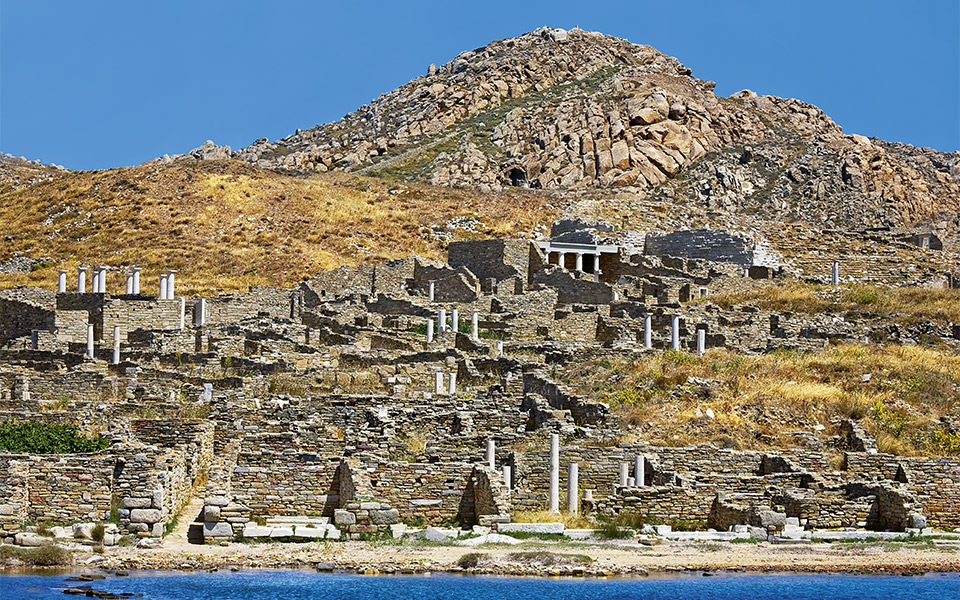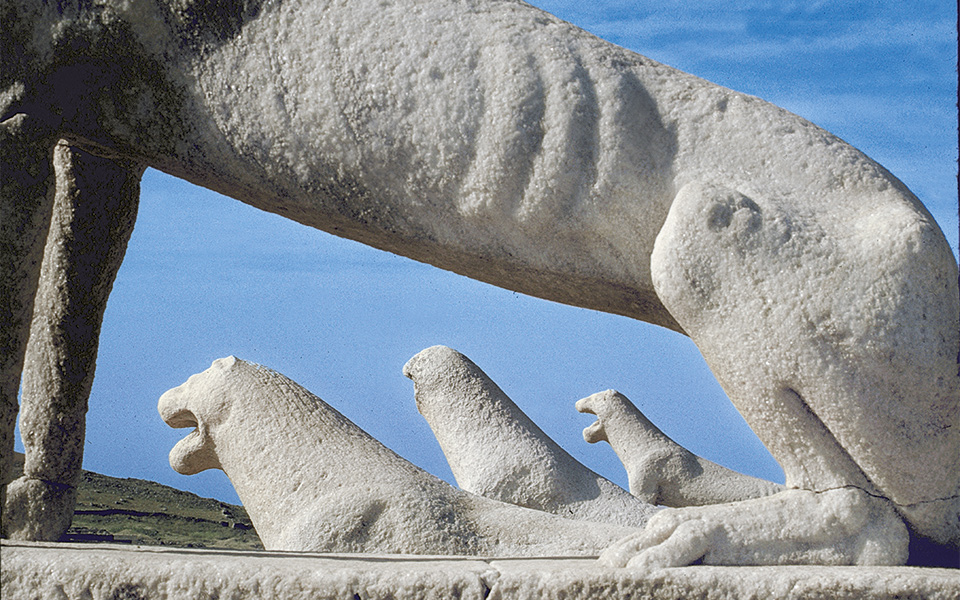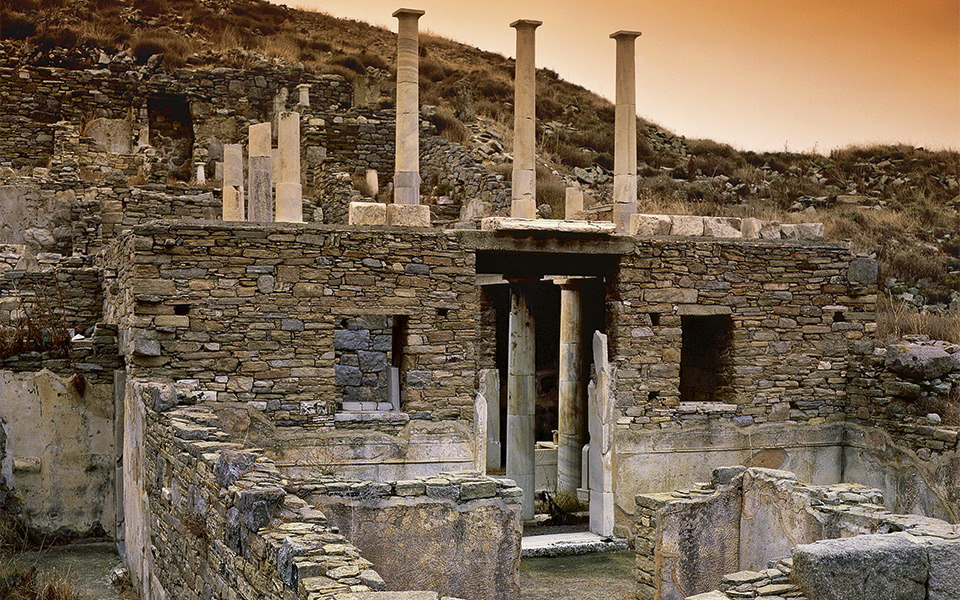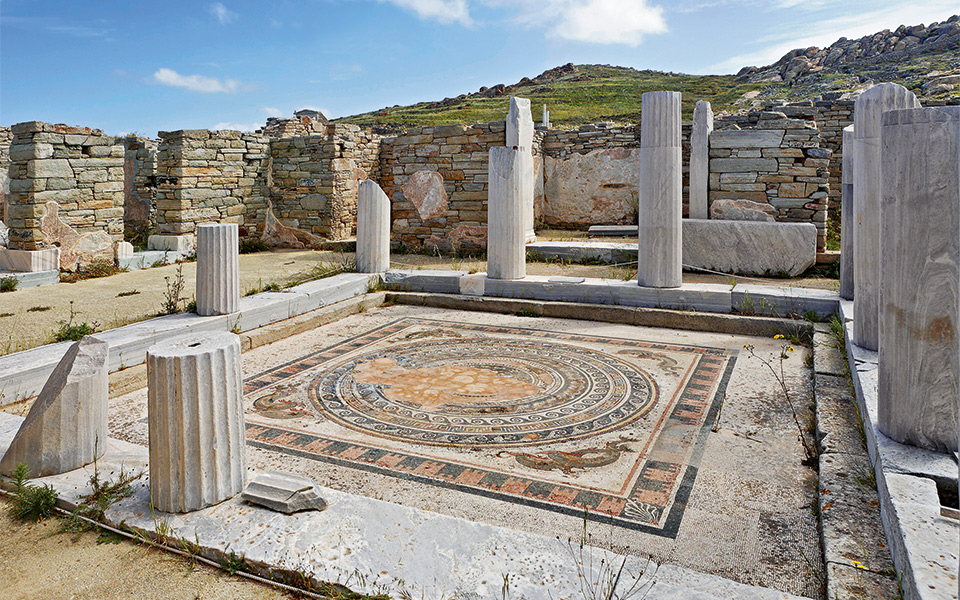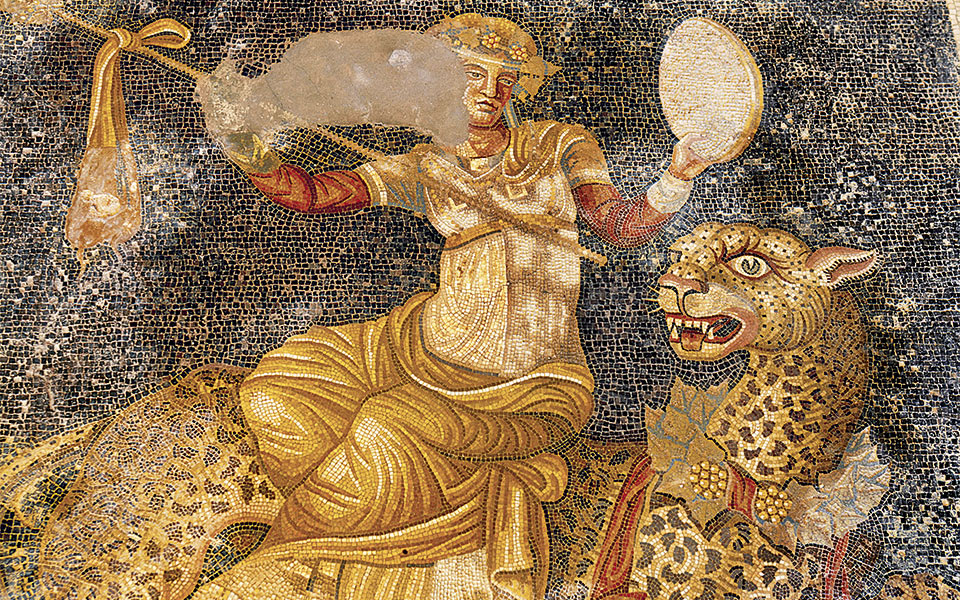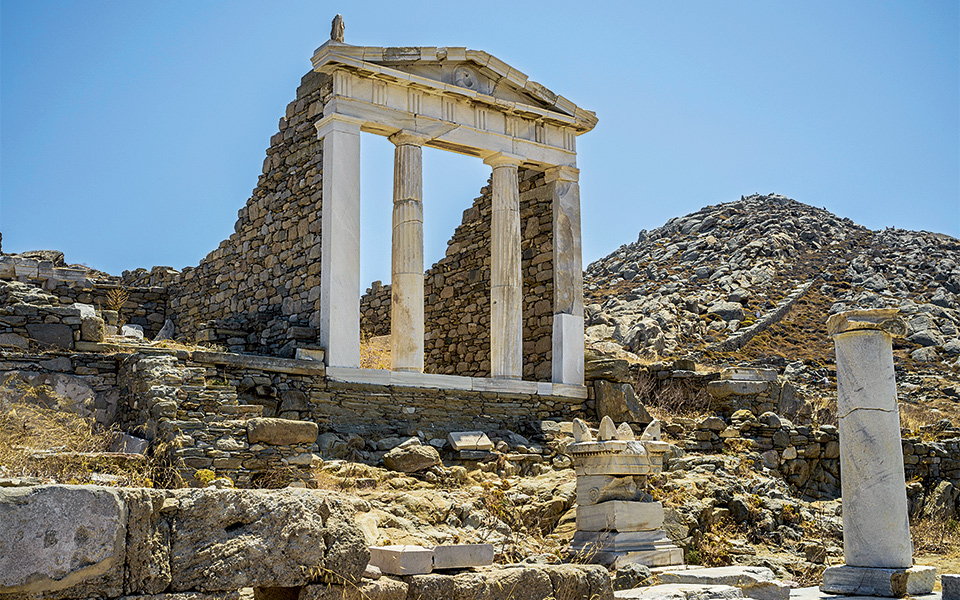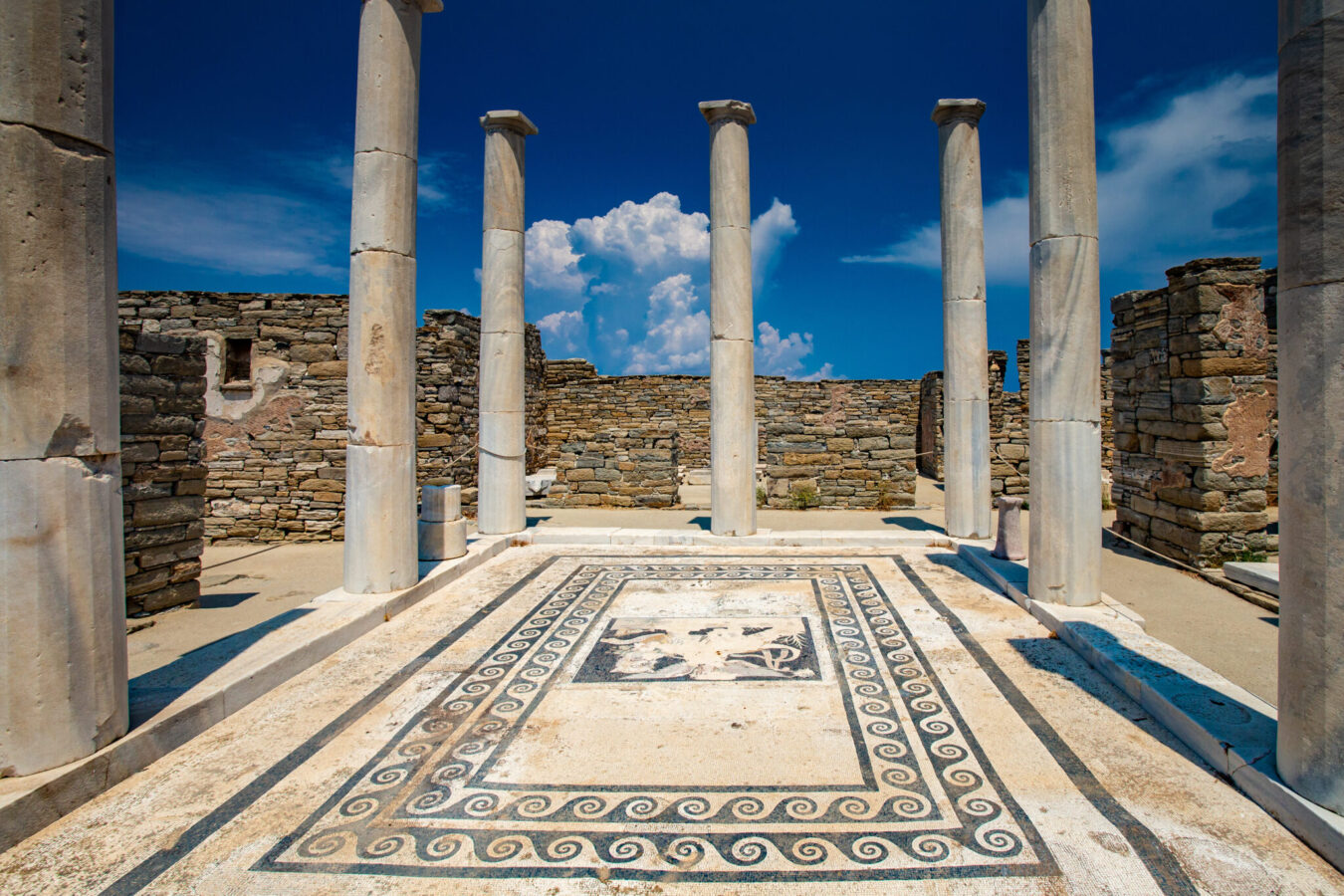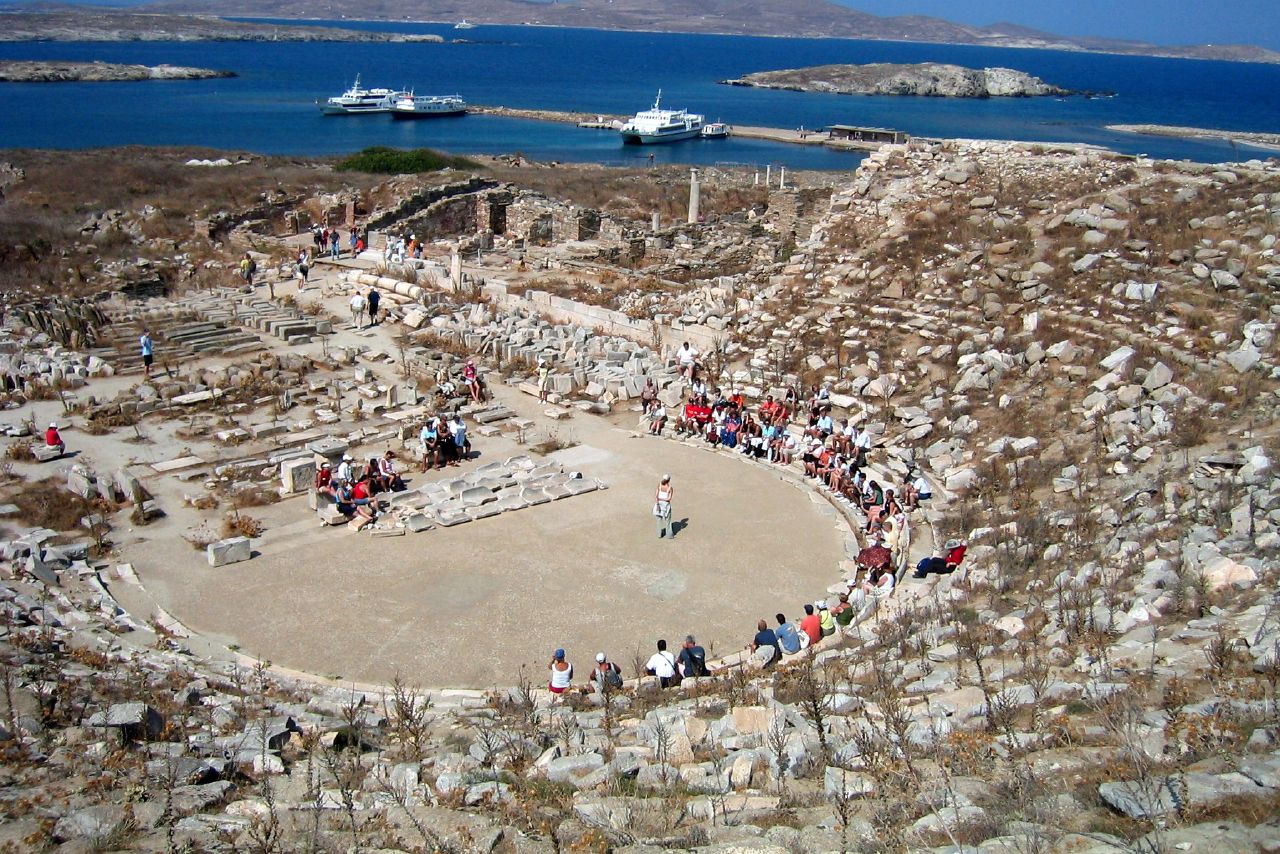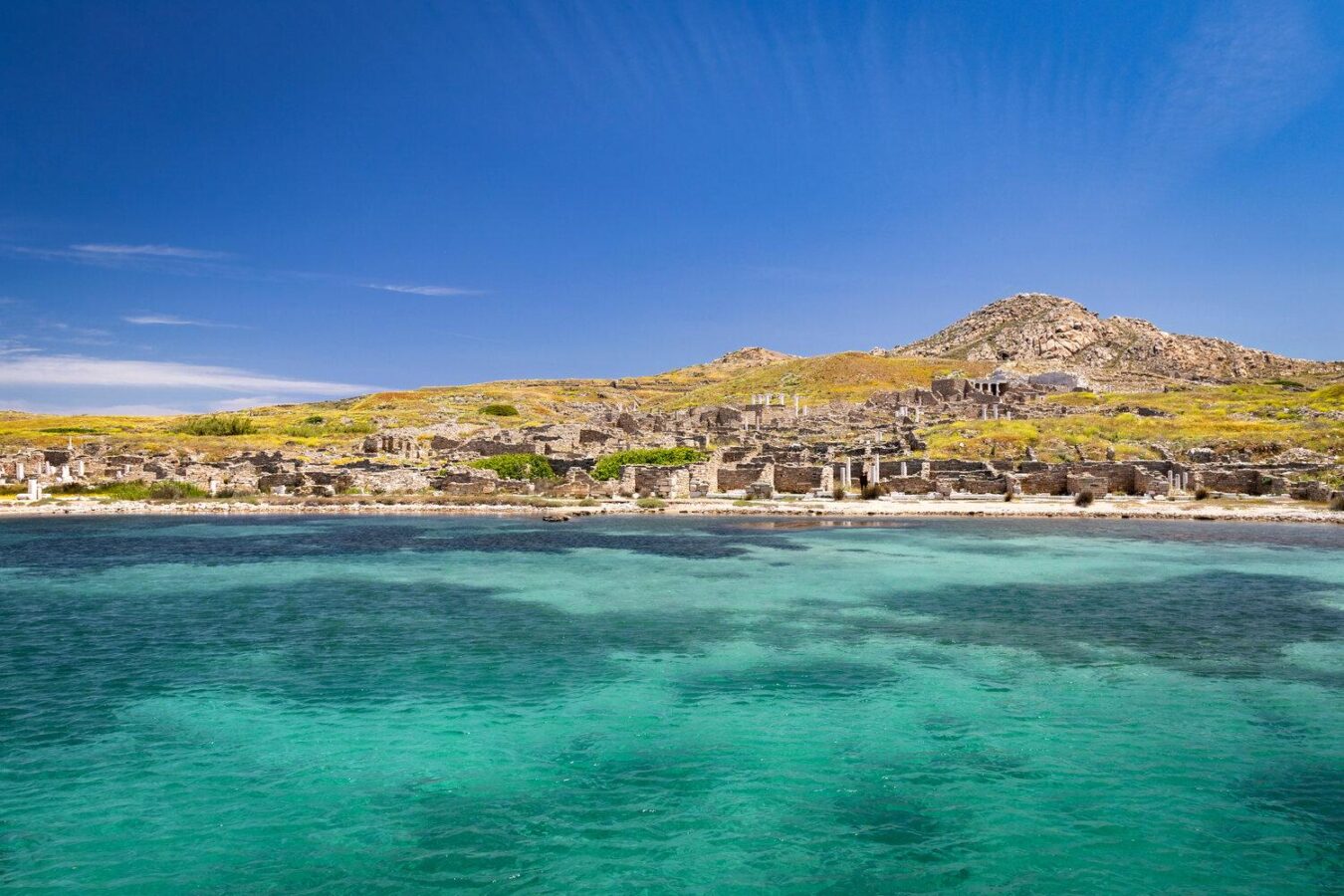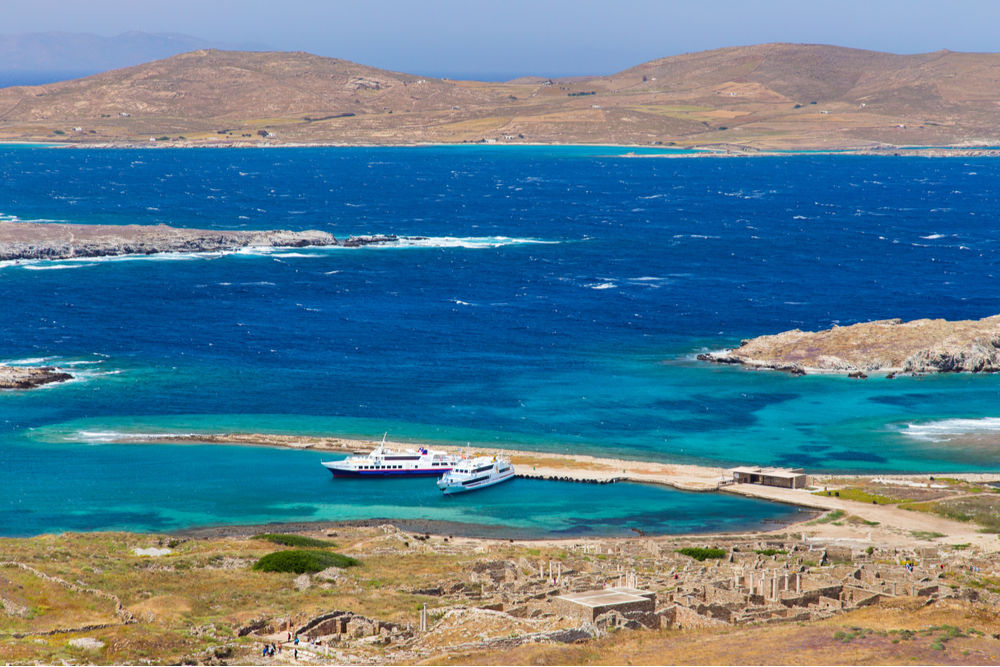Quality Brand Villas: Island in Plain Sight: Delos
Cultural, commercial, and financial spheres collide controversially.
Conflicts between regions or empires frequently engulfed ancient Delos, which seemed destined to be a hub of commerce and culture.
The “Visible” island of Delos in the Aegean Sea was a religious, unifying, conflicting, and slaughtering hub for the Cycladic people.
The Delians placed a premium on matters of the womb and the grave, as the island was the birthplace of Apollo and Artemis. On this holy ground, however, human beings were not to be born. The women who were expecting had to go to Rineia first.
Around 2,500 to 3,000 years ago, the island of Delos was a hive of activity, hosting rituals, festivals, plays, athletic competitions, and opulent mansions with mosaic floors and colonnaded courtyards. But the impoverished and enslaved people of Delian origin kept the economy afloat by working in shops, temples, and workshops, as well as by loading and unloading goods at busy ports.
The religious, political, and commercial grandeur of Delos drew greedy would-be possessors and wandering pirates from all four corners of the globe, making the island vulnerable to power struggles, invasions, and horrific assaults.
Apollo and Artemis, two antique marble lions from Naxian culture (late 7th century BC), are on display at the Delos Museum. They have several copies, and some of those guard the Sacred Lake.
The island Mysterious Town
The ruin-strewn islet of Delos remains a crossroads for international adventurers for a few hours daily. Its vast urban setting is like a fantastic outdoor museum, and it is one of the most important archeological sites in Greece.
In contrast to the nonstop partying on Mykonos, the quaint and occasionally haunted tranquility of Delos, a historical regional power center, is hard to beat. The island’s tranquility and desolation remain unchanged regardless of how long researchers remain there.
Parts of the island’s harbor city have been excavated since 1873 by the Greek government and the French School at Athens.
The maze of crumbling buildings contains hundreds, if not thousands, of portals that historians, philologists, and archaeologists have used to piece together a past society. These specialists aren’t stopping yet; they’ve uncovered architectural and artifact details, combed through literary material, and even explored the ocean floor.
For a better vantage point, visitors can ascend nearby Mount Kynthos. You can easily spot most of the island’s historic districts and landmarks from that vantage point. The Rineia, Tinos, Mykonos, Naxos, and Paros islands—large and small—are all located in the Mediterranean Sea.
Wildflowers of yellow, red, and purple bloom in Delos in the spring. Seasonal weeds transform low-lying ruins close to the residential Hill Quarter into ponds inhabited by strange croaking frogs.
The Inopos is an old creek that stealthily runs from Kynthos, and it is in the narrow, overgrown banks of this stream—as well as in courtyard wells—that broad-leafed fig trees grow.
Delos experiences bright and scorching summers due to the island’s lack of trees. Guests should look for shady spots next to houses or, if they’re more prepared, under umbrellas.
The former splendor of Delos’ multi-story colonnaded courtyard houses is revealed by partial reconstructions.
Triumph Power
Archaeologists found artifacts dating back to the Bronze Age Mycenaean artifacts from the main harbor area (c. 1,600-1,100 BC), while the modern-day Delos did not appear until about 800 BC. After Delphi, the island’s sanctuary became an important religious site.
Naxos, Paros, and Athens, three of Delos’ powerful neighbors, all built monuments or structures to show off their power. Located west of the Sacred Lake, the Naxians’ signature row of white marble lions made their authority known in the late 7th century BC.
It is possible that the Oikos of the Naxians (ca. 575 BC) was the first temple to Apollo, a ceremonial dining hall, or a storage place for cult equipment and votive offerings; it was also surrounded by an L-shaped colonnade (stoa) that defined the sacred space (550-500 BC) and a gigantic statue of Apollo (590-580 BC).
YOU ANNOY BEAUTIFUL KIDS
“Rejoice, blessed Leto, for you bore glorious children…as you rested against the great mass of the Cynthian hill hard by a palm tree by the streams of Inopus…” (HH3; early 6th c. BC)—the Third Homeric Hymn pays tribute to Leto, the mother of Apollo and Artemis, and alludes to important Delian landmarks.
Sailors brought the palm tree to the island of Delos, where it became a prized possession. Sacred Lake was where Roman visitors like Cicero could see “Leto’s palm” in the first century BC.
A palm tree marks the spot where the miraculous twins were born, but the water was filled up more than a century ago to keep malaria at bay.
The palaestrae, gymnasium, stadium, and theater that have been discovered in Delos date back to the 3rd or 2nd century BC, when the site was actively used for wrestling and boxing, as well as for running and other forms of training. Located northwest of the temple in 208 BC, Hypostyle Hall would have served as a sizable dining area. There were 44 columns that held up the ceiling of this massive interior space. Important potable water is collected next to the theater by a huge cistern with six inside arches.
Affluence and Quick Shipping
In 167 BC, the Romans established Delos as a free port, which led to the island’s rise to economic power. The Delian nobility had previously become affluent through cult offerings made by well-to-do festivalgoers.
The Ionians would be pleased to witness fast ships and prosperity if they were to meet, according to the hymn to Apollo.
Several other sculptures on engraved bases and votive offerings accompanied the Naxians’ lions and enormous Apollo in the main sanctuary and along the Via Sacra. The Samian tyrant Polykrates dedicated Rineia to Apollo in 530 BC and linked the islands with a massive iron chain to ensure their perpetual bond.
Important to visit
Elegant statues, exquisitely decorated vases, figures of deities, and fascinating domestic artifacts including as wall murals, mosaic flooring, marble tables, and basic cooking utensils can be seen at the Archaeological Museum of Delos.
Without a shadow of a doubt, the Dolphin House was among the best of Delos.
Cleanliness, Authority, and Support
Rineia is a treasure trove of artifacts from Delos. During the cleansings of the Apollo sanctuary, artifacts from ancient tombs and sacrifices were placed in holy pits across the river.
Around 540 BC, during the reign of the Athenians tyrant Peisistratus, the first purge took place. Athens annexed Delos (478 BC) following the Persian Wars and turned it into the Delian League’s headquarters. It was with much controversy that Pericles transferred the League’s treasure to the Athenian Acropolis in 454 BC. By ritually cleaning Delos and outlawing births and deaths in 426 BC, the Athenians once again demonstrated their sovereignty.
Luxurious statues, exquisitely sculpted vases, representations of male and female deities, murals, multi-colored tessellated mosaics, and commonplace objects such as marble tables and basic kitchen implements from Rineia and Delos are on display in the Delos Museum.
As the Macedonians’ power expanded in the fourth century BC, the Athenians’ hold on power began to erode. Delos achieved its independence by the mid-3rd century BC, thanks to the benign rule of Hellenistic kings. Encircling the sanctuary were the South Stoa, built by King Attalos I of Pergamon (post-250 BC), and the Stoa of Philip V of Macedonia (ca. 210 BC).
With the exception of certain high-ranking religious and diplomatic leaders, the pre-Roman population of Delos was no more than 10,000. Not only were mariners familiar with the island, but the Ionian inhabitants of the Aegean islands and western Anatolia likely placed a higher value on it due to its role as a Pan-Hellenic sanctuary and principal meeting place.
Altering Factors
The rise of Roman imperial power in 167 BC brought a sudden end to Delian hegemony. In exchange for Delos’s backing of King Perseus of Macedon and its willingness to let pirates attack Roman commerce, Rome granted free port access to all traders and seized the island.
After destroying Corinth in 146 BC and attempting to undermine Rhodes’ nautical strength, Delos may develop as a transshipment site. As the Roman economy flourished, a new aristocracy emerged that scoured the East for luxuries such as slaves, grain, perfumes, unguents, statues made of bronze and marble, metalwork, culinary specialties, elaborate linens and fabrics, and many more. Delos was a major transit point for many of these goods.
Perhaps at its height, Delos was breathtaking. As part of the sanctuary, there were three temples and shrines dedicated to Apollo, five buildings used for treasury offerings, a monument with a votive trireme, the vast Stoa of Antigonos, the Ekklesiasterion for the assembly of the people, and the Artemision (Temple of Artemis) surrounded by another L-shaped stoa.
Horuses of the Twelve Olympian Gods, including Leto, Hera, Zeus, Athena, Herakles, and Asclepius, were located beyond the main enclosure. The Egyptian deities Serapis and Isis, as well as Syrian deities, each had their own temple. One of these temples, with its beautiful facade, is now a monument after being largely renovated.
Strabo, a Roman geographer who lived in the early first century AD, noted that 10,000 slaves were sold every day in the port area’s colonnaded stoas, warehouses, and marketplaces.
Evidence from the Agora of the Italians (ca. 110 BC), the Koinon of the Poseidoniasts of Berytos (ca. 4th–2nd century BC), and the Agora of the Delians (ca. 4th–2nd century BC) suggests that the multiethnic merchants of Delos often congregated in distinct, club-like market halls and cultural/commercial centers.
Particularly evocative are individual residences and wealthy villas that display the diverse preferences and habits of the late Hellenistic and Roman Delians.
“The girls of Delos, handmaidens of the Far-shooter, sing of past men and women…” refers to the cosmopolitan Delians who were noted in ancient literature for their knowledge in other languages.If HH3 is to be believed, they can imitate the sounds of other people’s tongues and, in their endearing melody, even get near to the reality.
The Mithridatic Wars, fought between Pontus and Rome, brought an end to Delos’s prosperity as the island once again supported the wrong side. The island was besieged multiple times for twenty years following the slaughter of twenty thousand inhabitants in 88 BC by the forces of King Mithridates.
Life on Delos dwindled after it was finally destroyed by pirates from Cilicia in 69 BC. Pausanias, a Greek explorer from the second century AD, said that the island of Delos—which had been the common market of Greece—was deserted and that only Athenians guarded the shrine there. His subsequent guidebook bemoans the fact that the once-great Orchomenos plummeted nearly as far as Delos.
Despite Delos’ central role in ancient Greco-Roman life and thinking, it fell into the hands of crusaders, pirates, and antiquarians during the Middle Ages and the Early Modern Period.
Today, its streets and plazas are bustling with multilingual speakers as they travel from far and wide.
.

